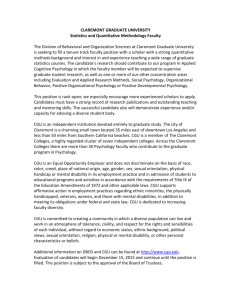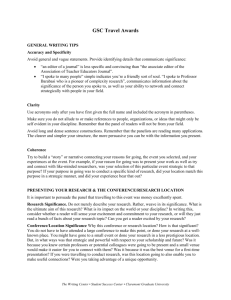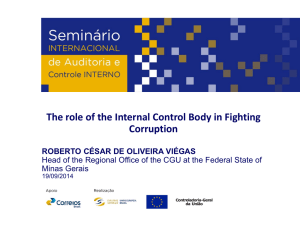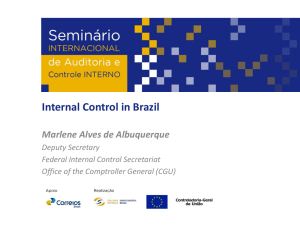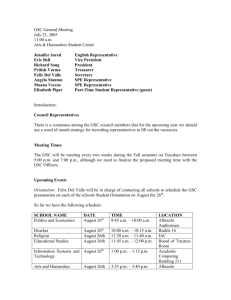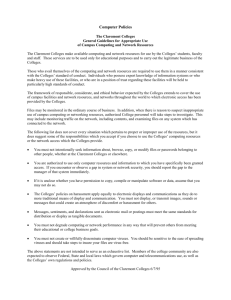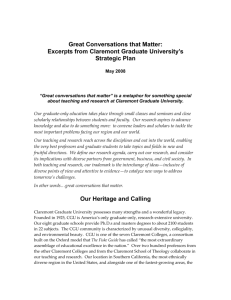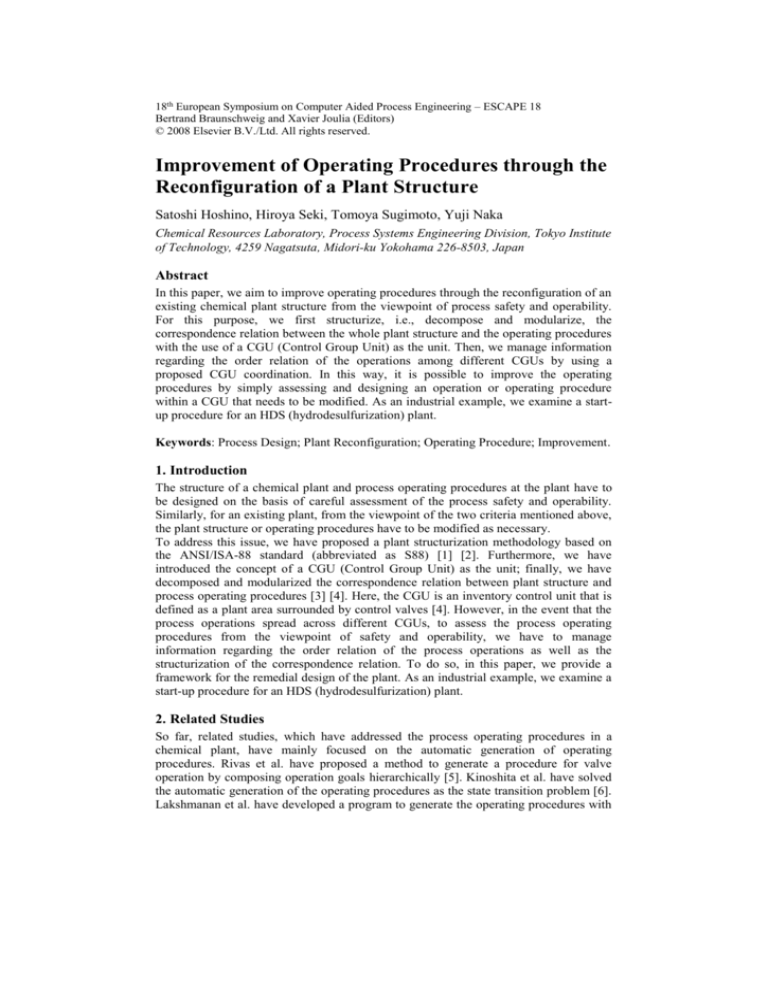
18th European Symposium on Computer Aided Process Engineering – ESCAPE 18
Bertrand Braunschweig and Xavier Joulia (Editors)
© 2008 Elsevier B.V./Ltd. All rights reserved.
Improvement of Operating Procedures through the
Reconfiguration of a Plant Structure
Satoshi Hoshino, Hiroya Seki, Tomoya Sugimoto, Yuji Naka
Chemical Resources Laboratory, Process Systems Engineering Division, Tokyo Institute
of Technology, 4259 Nagatsuta, Midori-ku Yokohama 226-8503, Japan
Abstract
In this paper, we aim to improve operating procedures through the reconfiguration of an
existing chemical plant structure from the viewpoint of process safety and operability.
For this purpose, we first structurize, i.e., decompose and modularize, the
correspondence relation between the whole plant structure and the operating procedures
with the use of a CGU (Control Group Unit) as the unit. Then, we manage information
regarding the order relation of the operations among different CGUs by using a
proposed CGU coordination. In this way, it is possible to improve the operating
procedures by simply assessing and designing an operation or operating procedure
within a CGU that needs to be modified. As an industrial example, we examine a startup procedure for an HDS (hydrodesulfurization) plant.
Keywords: Process Design; Plant Reconfiguration; Operating Procedure; Improvement.
1. Introduction
The structure of a chemical plant and process operating procedures at the plant have to
be designed on the basis of careful assessment of the process safety and operability.
Similarly, for an existing plant, from the viewpoint of the two criteria mentioned above,
the plant structure or operating procedures have to be modified as necessary.
To address this issue, we have proposed a plant structurization methodology based on
the ANSI/ISA-88 standard (abbreviated as S88) [1] [2]. Furthermore, we have
introduced the concept of a CGU (Control Group Unit) as the unit; finally, we have
decomposed and modularized the correspondence relation between plant structure and
process operating procedures [3] [4]. Here, the CGU is an inventory control unit that is
defined as a plant area surrounded by control valves [4]. However, in the event that the
process operations spread across different CGUs, to assess the process operating
procedures from the viewpoint of safety and operability, we have to manage
information regarding the order relation of the process operations as well as the
structurization of the correspondence relation. To do so, in this paper, we provide a
framework for the remedial design of the plant. As an industrial example, we examine a
start-up procedure for an HDS (hydrodesulfurization) plant.
2. Related Studies
So far, related studies, which have addressed the process operating procedures in a
chemical plant, have mainly focused on the automatic generation of operating
procedures. Rivas et al. have proposed a method to generate a procedure for valve
operation by composing operation goals hierarchically [5]. Kinoshita et al. have solved
the automatic generation of the operating procedures as the state transition problem [6].
Lakshmanan et al. have developed a program to generate the operating procedures with
2
Satoshi Hoshino et al.
the use of a partial planner [7] [8]. Naka et al. have proposed a design methodology that
automatically generates the operating procedures by changing the plant topology [9].
However, these related works have not focused on the generation of the process
operating procedures in consideration of the correspondence relation with the plant
structure. Furthermore, no study has taken into account the order relation among
different CGUs. These are the challenges in this paper.
3. Framework for the Improvement of Operating Procedures
3.1. Approach
In this paper, we propose and apply the CGU coordination to manage information
regarding the order relation of the processes that spread across the different CGUs. By
using the CGU coordination, it is possible to assess the process safety and operability in
the CGUs. The detailed approach is described as follows:
1. Structurization of the correspondence relation between the plant structure and
process operating procedures with the use of the CGU.
2. Careful assessment of each CGU from the viewpoint of process safety and
operability.
3. Improvement of a process if necessary as a result of step 2.
4. Management of information regarding the order relation of the process operating
procedures among different CGUs.
5. Integration of information and generation of the whole operating procedure.
3.2. CGU Coordination
In designing chemical processes on the basis of the procedural control model with the
use of the current PFC (Procedural Function Chart defined in the S88), we have to take
into account the order relation of the processes among different CGUs. On the other
hand, in our design framework, we simply consider the order relation of the operating
procedures in each CGU by only using the CGU coordination. That is to say, plant
designers are able to assess process safety and operability and design the operating
procedures by focusing on a CGU unit only.
In order to manage information regarding the order relation of the processes spread
across the different CGUs, it is necessary to identify the following information, which is
yielded by a conditional transition in a CGU:
end information of the operation in another CGU; and
similar information to the operation in another CGU.
For the purpose described above, we have to distinguish the conditional transition from
other conditional transitions. Moreover, CGU coordination requires having information.
Therefore, in this paper, we contrive several symbols in addition to the conventional
PFC. Figure 1(a) shows a symbol of the conditional transition. The operation and
conditional transition indicated with the symbol shown in Fig. 1(a) are described in the
CGU coordination as shown in Fig. 1(b) and Fig. 1(c).
Figure 2 shows an example of the procedural control model, which consists of four
CGUs in a continuous process described with the use of the contrived symbols. Thus, it
is possible to identify the CGU, in which an operating procedure is executed by painting
a color (light blue) on the CGUs that need to be operated. First off, the CGU
coordination begins to execute operations from the start symbol; then, the end symbol is
executed after all operations are done. As for the conditional transitions indicated by the
symbol shown in Fig. 1(a), these conditions depend on the conditions in other CGUs.
To manage information, the CGU coordination checks if the conditional transitions,
which are depicted by Fig. 1(a), are met.
Improvement of Operating Procedures through the Reconfiguration of a Plant Structure
(a)
(b)
(c)
Fig. 1 Further symbols described in the CGU coordination
Fig. 2 An example of a procedural control model and CGU coordination
3.3. Integration of Operation Procedures
The integration process of the generated operating procedures for the CGU with the use
of the CGU coordination is described as follows:
Step 1. Integration of phases that are described with a tag, e.g., TRx, SAMEx, and IFx.
Step 2. Checking of conditional transitions shown with an ellipse.
Step 3. Indication of the executable phases in each CGU.
Step 4. Connection of the indicated phases from the top to the bottom in sequence.
Step 5. Execution of the end symbols as a parallel operation at the same time.
4. Case Study
4.1. HDS Plant
As an industrial example, we examine a start-up procedure for an HDS
(hydrodesulfurization) plant (see the detailed PDF (Process Flow Diagram) in [1] [2]).
Figure 3 shows a simplified schematic of the HDS plant divided into four CGUs.
Blended diesel oil which flows from the FSD (Feed Surge Drum) is mixed with H2-rich
gas and heated by the RCF (Reactor Charge Furnace); after passing through the reactor,
the reactor effluent is separated into gas and liquid at the HPS (High-Pressure
4
Satoshi Hoshino et al.
Separator); H2S in the separated gas is absorbed in the amine scrubber, and the
remaining H2 is recycled. The liquid is sent to the LPS (Low-Pressure Separator).
Figure 4 shows the structurized process operating procedures for the existing operating
procedures with the use of the proposed procedural control model. In Fig. 4,
‘Procedure,’ ‘Unit Procedure,’ and ‘Operation’ are shown.
Fig. 3 HDS plant decomposed and modularized by assigning the CGUs
4.2. Assessment of the Existing Operating Procedures
For the design of operator-friendly operating procedures, it is necessary to simplify
them. Furthermore, an operation should not be controlled in a CGU that is not directly
involved. From the assessment result of Fig. 4, we conclude that the operations colored
in gray, such as ‘gas circulation,’ ‘catalyst activation,’ and ‘rising temperature,’ present
problems, as indicated in the following:
Gas circulation: although this is an operation that aims at the reactor circuit in the
CGU 2, it is also included in CGU 4.
Catalyst activation: although this is an operation, which aims at the reactor in the
CGU 2, it is also included in CGUs 1, 3, and 4.
Rising temperature: although this operation aims at the RCF in CGU 2, it is also
included in CGU 4.
4.3. Improvement of the Operating Procedures
For the problems mentioned in 4.2, we improve the operating procedures, i.e., CGUs
and operations, as follows in consideration of process safety and operability.
Gas circulation: we remove the operation executed in CGU 4. For this purpose, we
also remove the phase, ‘start the air cooler,’ in CGU 4. This phase has to be executed
before the heated diesel oil in the RCF flows into CGU 4.
Catalyst activation: we remove the phases in CGU 1, ‘transfer the diesel oil to the
reactor’ and ‘add the sulfide,’ the phase in CGU 3, ‘pressurize the LPS,’ and the
phases in CGU 4, ‘pressurize the SOrec’ and ‘transfer the product diesel oil to the
output tank.’ Moreover, as a new operation, we add the operation, ‘feed the diesel oil
Improvement of Operating Procedures through the Reconfiguration of a Plant Structure
to the reactor circuit,’ into CGU1. Then, the phase ‘add the sulfide’ in CGU 1 is
moved into CGU 2. This modification results in the reconfiguration of a part of the
plant structure002E The phases in CGUs 3 and 4, ‘pressurize the LPS’ and
‘pressurize the SOrec,’ are moved into the operation ‘initial charge’ in CGU 2. The
operation, ‘catalyst activation,’ in CGU 3 is changed to ‘generation of the on-spec
product’ through the LPS.
Rising temperature: we remove all operations executed in CGU 4. These operations
are changed to the operation ‘generation of the on-spec product.’
The operation, ‘initial charge,’ in CGUs 3 and 4 is incorporated into the operation,
‘generation of the on-spec product.’ Figure 5 shows the improved operating procedures.
Finally, this plant is able to be in a stable state after the operation ‘initial charge’ in
CGUs 3 and 4 is executed. The operations shown in color are executed at the same time
in each CGU.
Fig. 4 Structured description of the operating procedures of the HDS plant
5. Conclusions and Future Studies
In this paper, for an existing chemical plant, we improved the operating procedures in
terms of process safety and process operability. We structurized the correspondence
relation between the whole plant structure and the operating procedures with the use of
the CGU. After that, for the structurized correspondence relation between the plant
structure and the operating procedures, we managed information regarding the order
relation of the operations among different CGUs by using the proposed CGU
coordination. As an industrial example, we examined a start-up procedure for the HDS
plant, and, finally, we showed the improved operating procedures by simply assessing
and designing an operating procedure within a CGU that needs to be modified.
6
Satoshi Hoshino et al.
Fig. 5. Improved operating procedures (Procedure, Unit Procedure, and Operation)
References
1.
2.
3.
4.
5.
6.
7.
8.
9.
Instrumentation, Systems, and Automation Society, 1996, ANSI/ISA-88.01-1995 Batch
Control Part 1: Models and Technology, ISA, Research Triangle Park, USA.
Instrumentation, Systems, and Automation Society, 2001, ANSI/ISA-88.02-2001 Batch
Control Part 1: Data Structures and Guidelines for Languages, ISA, Research Triangle Park,
USA.
H. Seki, S. Hoshino, T. Sugimoto, and Y. Naka, 2007, Structured Description of Operating
Procedures for Continuous Chemical Processes, (submitted to PSE Asia, China).
Y. Naka, H. Seki, S. Hoshino, and K. Kawamura, 2007, Information Model And
Technological Information - Infrastructure For Plant Life Cycle Engineering, ICheaP-8 The
eight International Conference on Chemical & Process Engineering.
J. R. Rivas and D. F. Rudd, 1974, Synthesis of Failure-safe Operations, AIChE Journal, Vol,
20, No. 2, pp. 311-319.
A. Kinoshita, T. Umeda, and E. OShima, 1982, An Approach for Determination of
Operational Procedure of Chemical Plants, Proceedings of the International Symposium on
Process Systems Engineering, pp. 114-120.
R. Lakshmanan and G. Stephanopoulos, 1988, Synthesis of Operating Procedures for
Complete Chemical Plants - I. Hierarchical, structured modeling for nonlinear planning,
Computers and Chemical Engineering Vol. 12, No. 9/10, 985-1002.
R. Lakshmanan and G. Stephanopoulos, 1990, Synthesis of Operating Procedures for
Complete Chemical Plants - III. Planning in the presence of qualitative mixing constraints,
Computers in Chemical Engineering, Vol. 14 No. 3, pp. 301-17.
Y. Naka, M.L. Lu, H. Takiyama, 1977, Operational Design for Start-up of Chemical
Processes, Computers Chem. Engng, Vol. 21, No. 9, pp. 997-1007.

